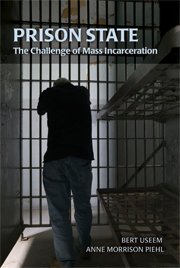Book contents
- Frontmatter
- Contents
- Acknowledgments
- 1 The Buildup to Mass Incarceration
- 2 Causes of the Prison Buildup
- 3 More Prison, Less Crime?
- 4 Prison Buildup and Disorder
- 5 The Buildup and Inmate Release
- 6 Impact of the Buildup on the Labor Market
- 7 Conclusion: Right-Sizing Prison
- Notes
- Index
- CAMBRIDGE STUDIES IN CRIMINOLOGY
5 - The Buildup and Inmate Release
Published online by Cambridge University Press: 31 January 2011
- Frontmatter
- Contents
- Acknowledgments
- 1 The Buildup to Mass Incarceration
- 2 Causes of the Prison Buildup
- 3 More Prison, Less Crime?
- 4 Prison Buildup and Disorder
- 5 The Buildup and Inmate Release
- 6 Impact of the Buildup on the Labor Market
- 7 Conclusion: Right-Sizing Prison
- Notes
- Index
- CAMBRIDGE STUDIES IN CRIMINOLOGY
Summary
What are we doing about all the people coming out of prison?
A natural consequence of the prison buildup is the record number of inmates released from the nation's prisons, now on the order of 670,000 per year. Political leaders, criminal justice practitioners, and researchers from diverse policy areas have raised alarm about the effects of this flow on communities. As we discuss in this chapter, inmate release is interconnected with crime, the number and characteristics of those incarcerated, and with prison conditions, the consequences of mass incarceration considered in previous chapters.
Studies consistently show that almost two-thirds of the prisoners released from state and federal prisons are rearrested, and two-fifths are reincarcerated within 3 years of release. In tandem with the concern for public safety is a concern for quality of life in the poor and disadvantaged neighborhoods where prisoners return in large concentration. Diseases such as HIV, hepatitis, tuberculosis, and mental health problems among prisoners constitute a sizable percentage of all cases in the U.S. population. Ex-prisoners crowd homeless shelters and have intertwined education, employment, housing, family, and health needs that tax government agencies, as well as the private and nonprofit organizations that provide services in these areas.
Encouraged by $100 million in grants issued by the federal government in 2002, initiatives are being mounted across the United States to improve prisoner reentry. Research has described the social and economic costs of poorly prepared and poorly supervised ex-prisoners.
- Type
- Chapter
- Information
- Prison StateThe Challenge of Mass Incarceration, pp. 116 - 140Publisher: Cambridge University PressPrint publication year: 2008

